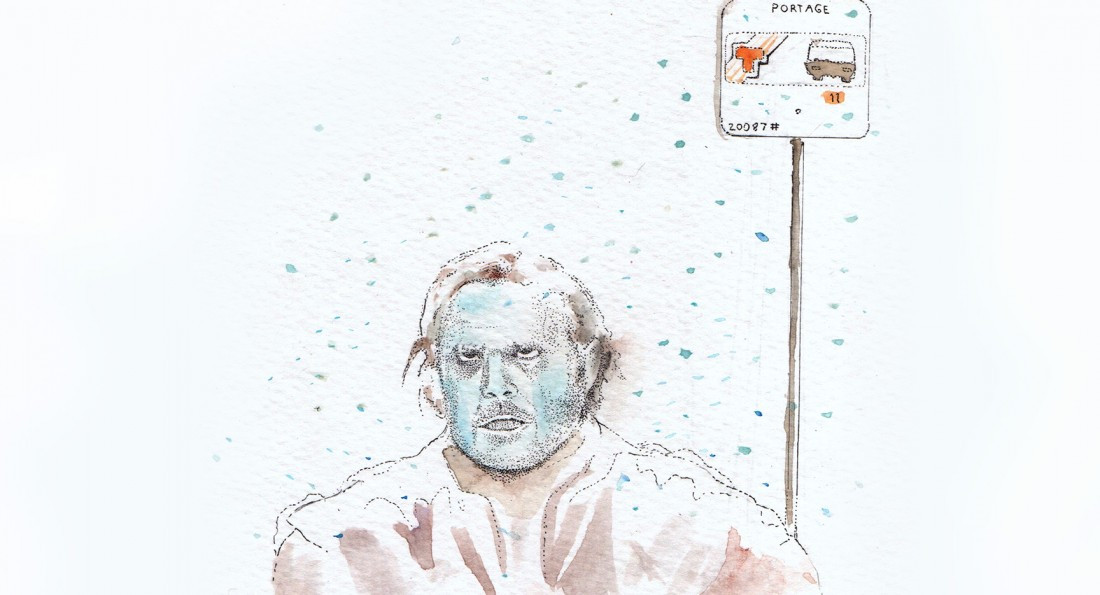Transit conversations in the fast lane
Opening up dialogue about Winnipeg’s rapid transit expansion
In December 2016, Winnipeg Transit commenced a new study to provide better rapid transit services to its bus patrons. The plan is to expand the rapid transit network to include a secondary corridor.
The study is to be completed by spring 2018 by MMM Group Limited and is being conducted to improve the design, access to and implementation of the Eastern Transitway, which is looking to create a better route from Transcona to downtown through South Point Douglas or North St. Boniface.
Bosc adds that by increasing the number of buses that run downtown, transit flow would be increased and buses would be able to make more trips in a day.
“It would be like our way of having a subway, in some ways,” Denis Bosc, financial secretary treasurer of the Amalgamated Transit Union (ATU), says. “It’s the same concept. It will move people faster.”
Public engagement is the foundation of the study’s process, but hearing different voices on transit issues highlights transit users’ understanding of how Winnipeg's transit system works and what transit operators are capable of changing.
“I guess it boils down to (the) processes through the (city) councillors and what people want … as a taxpayer, we’re all responsible for what’s going on of how much transit will be improved or not,” Bosc says.
Speaking with a city councillor is one way to go about making change. Bosc believes that by increasing the number of bus drivers and buses available in the city, transit operators will be able to provide a better service to transit users.
When winter hits, drivers must also factor in seasonal issues such as frosted windows, which diminishes visibility, improperly distributed heat in the driver's cabin and throughout the bus and harsher overall road conditions.
“This year we got so much snow that the lanes get crowded, almost to the point where the curb lane is non-existent anymore,” Bosc says. “You do get mad, you expect the bus to be there … but you have to understand that there is going to be a delay, (and) a delay is better than never.”
Bosc encourages bus patrons to use resources such as Telebus and transit apps in preparation for winter transit use, but to not solely rely on them. He also advises users to watch the weather forecast and plan accordingly.
Bob Hummelt, long-time transit user, has some suggestions for making transit usage flow better.
“To throw an extra express bus or two during rush hour would eliminate the crush of people on some buses,” Hummelt says. “Many times the aisles are full for almost the whole ride, and this would cause a few to consider taking their cars instead.”
Hummelt prefers taking the bus to driving and adds that diamond lanes usually make for faster transportation. However, he sees possible deterrents in taking the bus outside of rush hour.
“The rush hour rides are ‘all business,’ as the users all seem to be headed for work or school,” Hummelt says. “The few times I ride outside rush hour offers a different experience at times … it is louder and occasionally edgy.”
Erin Meagan Schwartz, a transit user, travels downtown from Old Kildonan but has some reservations in doing so.
“I love taking public transit, because driving seems environmentally silly if I’m just driving myself,” Schwartz says.
Schwartz believes that using the same roads as other vehicles slows buses down and says rapid transit corridors currently aren’t covering many areas in the city. This doesn’t deter her regard of buses or transit operators.
“I really appreciate that bus drivers can drop you off in between stops in the evenings, “ Schwartz says. “(It's) very helpful especially on biting cold and/or scary nights.”
Published in Volume 71, Number 17 of The Uniter (January 26, 2017)







